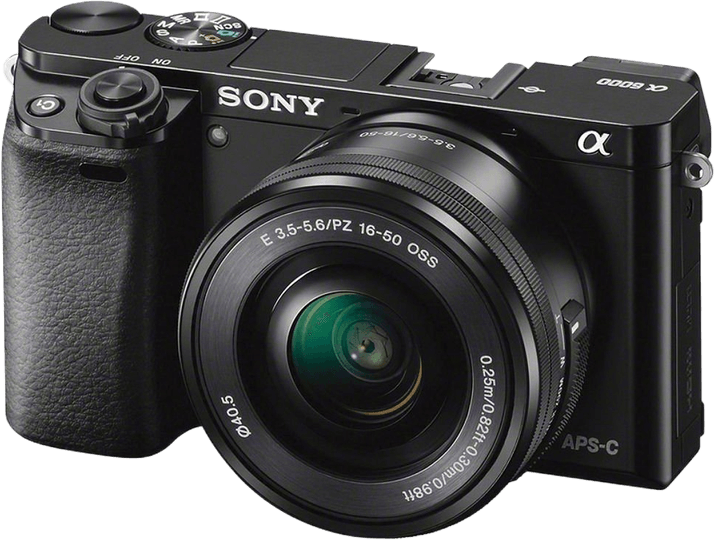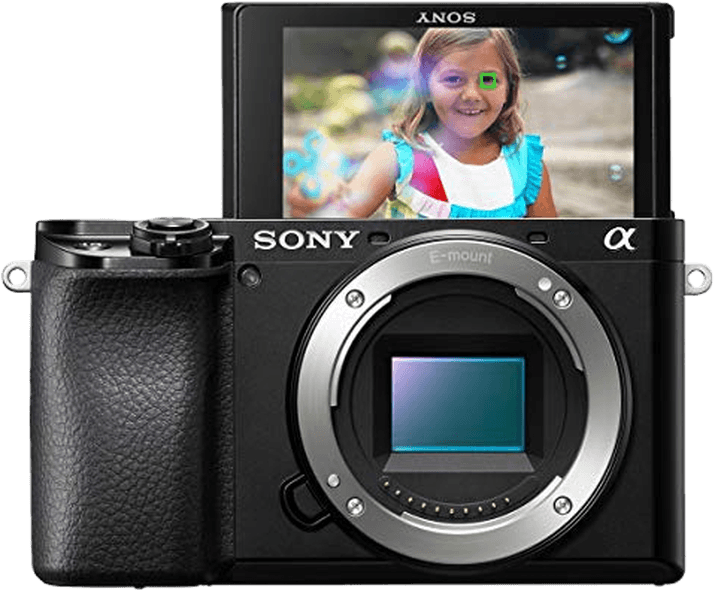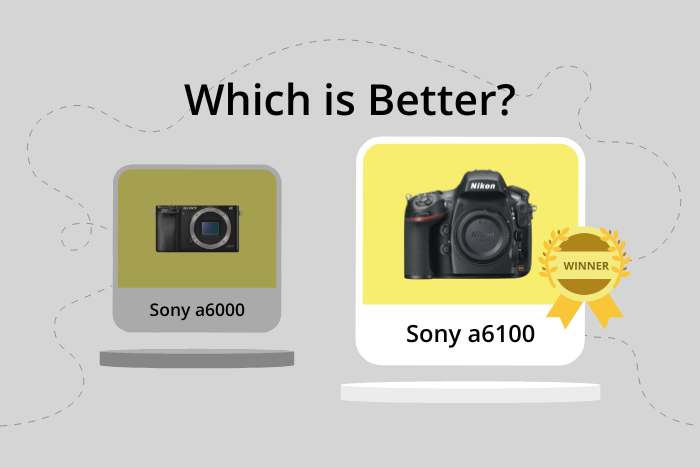Sony a6000 vs a6100 Comparison
Sony a6000

Sony a6100

The Sony a6100 emerges as the winner with a score of 66/100, while the Sony a6000 trails behind with a score of 57/100. Both cameras are mirrorless and share the same dimensions of 120 x 67mm. However, the a6100 is slightly thicker at 59mm compared to the a6000’s 45mm depth. The a6100 is also heavier, weighing in at 396g, while the a6000 is lighter at 344g.
The a6100’s higher score indicates its superior performance and features. Despite being newer and better, it has a lower launch price of $750 compared to the a6000’s $799. The a6000, on the other hand, has the advantage of being lighter, which may be preferable for some users.
Taking these factors into account, the Sony a6100 offers better value and performance, while the Sony a6000 may appeal to those who prioritize a lighter camera.
Sony a6000 vs a6100 Overview and Optics
The Sony a6100 slightly outperforms the Sony a6000 in terms of optics, with a score of 68/100 compared to the a6000’s 67/100. Both cameras share several common specifications, such as a 24-megapixel CMOS sensor, 11 fps shooting speed, Bionz X processor, DXOMARK score of 82 for the sensor, APS-C sensor size, Sony E lens mount, and no image stabilization.
The a6100’s advantage lies in its slightly better overall optics performance. This one-point difference may not seem significant, but it can translate to subtle improvements in image quality and performance. This might be particularly noticeable in low-light situations or when capturing fast-moving subjects, where the a6100 could potentially deliver marginally better results than the a6000.
On the other hand, the Sony a6000 has a slightly higher megapixel count at 24.3 compared to the a6100’s 24. This difference is minimal, but it may provide the a6000 with a slight edge when it comes to image resolution and detail. However, this advantage is not enough to compensate for the a6100’s overall better optics performance.
Ultimately, the Sony a6100 proves to be the better choice in terms of optics performance. Despite the a6000’s slightly higher megapixel count, the a6100’s overall better performance makes it the more suitable option for photographers seeking optimal image quality and performance. While the a6000 is still a capable camera, the a6100’s marginally better optics make it the superior choice for those prioritizing optical performance.
Sony a6000 vs a6100 Video Performance
The Sony a6100 outperforms the Sony a6000 in video capabilities, with a video score of 91/100 compared to the a6000’s 56/100. Both cameras share some common specifications, such as recording in the Full HD video resolution of 1920 x 1080. However, the a6100 surpasses the a6000 in several aspects, making it the clear winner in this comparison.
The a6100 boasts a 4K video resolution (3840 x 2160), which is a significant improvement over the a6000’s Full HD resolution. This higher resolution results in more detailed and sharper video quality. Additionally, the a6100 has a maximum video frame rate of 120fps, double the a6000’s 60fps. This allows for smoother motion and better slow-motion capture capabilities.
Another advantage of the a6100 is its built-in time-lapse functionality, which the a6000 lacks. This feature enables users to create stunning time-lapse videos without the need for additional software or accessories.
Despite these differences, the Sony a6000 still has its merits. Its Full HD resolution and 60fps frame rate are adequate for casual video shooting and may be sufficient for some users’ needs. However, the a6100’s superior video performance makes it the better choice for those seeking higher quality and more advanced video capabilities.
In comparing the video capabilities of the Sony a6000 and a6100, the a6100 is the superior choice due to its 4K resolution, higher frame rate, and built-in time-lapse functionality. The a6000 may serve as a satisfactory option for casual users, but the a6100’s features make it the better camera for those seeking enhanced video quality and features.
Sony a6000 vs a6100 Features and Benefits
The Sony a6100 outperforms the Sony a6000 in features with a score of 68/100 compared to the a6000’s 41/100. Both cameras share some specifications, including a 3-inch screen size, 921,600-dot screen resolution, flip screen, lack of GPS, and WIFI connectivity. However, the a6100 surpasses the a6000 in certain aspects, which contributes to its higher score.
The Sony a6100 is superior due to its touchscreen and Bluetooth capabilities, which the a6000 lacks. The touchscreen allows for easier navigation and control, while Bluetooth enhances the camera’s connectivity options. These additional features make the a6100 more user-friendly and versatile than the a6000.
Regarding the Sony a6000, it is difficult to pinpoint areas where it outshines the a6100, as the latter camera improves upon the former’s features. The a6000 does not possess any unique advantages over the a6100, which explains its lower score.
Taking the specifications and features into account, the Sony a6100 is the clear winner in this comparison. Its touchscreen and Bluetooth capabilities elevate it above the a6000, making it the better choice for those seeking a more advanced and user-friendly camera. The Sony a6000, on the other hand, may still be suitable for users with simpler requirements and a tighter budget, but it falls short in terms of features when compared to the a6100.
Sony a6000 vs a6100 Storage and Battery
The Sony a6100 outperforms the Sony a6000 in storage and battery with a score of 37/100 compared to the a6000’s 21/100. Both cameras share common specifications, such as one memory card slot and compatibility with SD/SDHC/SDXC and Memory Stick Pro Duo cards. They also use the same NP-FW50 battery type.
The a6100 has a longer battery life of 420 shots, while the a6000 offers 360 shots. Additionally, the a6100 provides USB charging, which the a6000 lacks. This makes the a6100 more convenient for on-the-go users who need to recharge their batteries without a separate charger.
The a6000 does not have any advantages in storage and battery over the a6100. Therefore, the a6100 is the clear winner in this category due to its longer battery life and USB charging capability, making it a more practical choice for photographers who require extended shooting sessions and flexible charging options.
Sony a6000 vs a6100 Alternatives
If you want to check out some more comparisons for inspiration, why not start with these:

